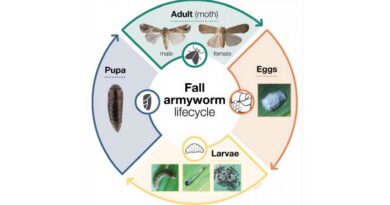“Forbidden fruit” the star in Gisborne orchard’s citrus line-up
13 September 2022, NZ: One of the things Murray Burgess loves about his grapefruit crop is the fruit’s versatility. He can leave them on the tree to grow in size, he can pick them early and put them in a degreening chamber to get them ready for market, or he can have a range of varieties to harvest in winter and summer. ANNE HARDIE speaks to the boutique citrus grower about the joys of growing grapefruit.
Murray and his wife, Wendy, grow 12 hectares of citrus at Te Karaka, 30km inland from Gisborne, with a mix of mandarins, oranges, limes, lemons and grapefruit. They bought Blue Willow Citrus 20 years ago because Murray had been working on a variety of orchards and wanted to “have a crack at it” himself.
“There was a bit to learn,” he says. “Anyone who says they know everything there is to know about growing citrus is a liar.”
On the grapefruit side of the business, Murray and Wendy grow the Golden Special (Morrison variety), Cutlers Red variety for winter fruiting and Star Ruby for its summer crop.
Golden Special is an improved version of the Morrison seedless variety, producing a juicy, tangy and sweet fruit. The yellow-skinned, white-fleshed grapefruit usually comes into production in late May or early June and will hang around on the trees until September or October, depending on supply and demand.
Cutlers Red matures a little later than Golden Special, with the first fruit usually harvested from late July or early August and running through to October or November. The fruit has a rich red-orange skin and white flesh that is sweet and juicy, with just a little zing.
Star Ruby is a pink-flesh grapefruit that only begins to mature from late November and hits its straps flavour-wise in the new year when the flesh reaches a deep pink blush and juice content is high.
Grapefruit is welcome relief for Murray after harvesting the mandarin crop, for two reasons – they are bigger fruit, and he can pick the fruit gradually to suit market demand instead of picking the entire crop at once.
“You can pick them half green in June and put them in degreening chambers,” Murray says. “That will turn them to their natural colour so you can get the early market.
“What I like about grapefruit is you can leave them on the tree all the way through to October.”
The sheer size of grapefruit fills bins fast and smaller fruit are left on the tree to size up. The market only wants grapefruit larger than 90mm in diameter, so Murray thins the fruit in autumn to grow larger-sized fruit. Through harvest, he skim-picks the larger fruit until he has completed about five picks to get the last of the crop. Grapefruit have very little wastage because everything stays on the trees until they are big enough. Golden Special achieves zero waste as its smaller fruit at the end of the season is used in marmalades.
Through summer, Star Ruby grapefruit produces an abundant crop of red-fleshed fruit. Murray planted the variety five years ago and the trees are just reaching full production and paying their way. Despite Gisborne’s sunny climate, New Zealand is considered marginal for growing grapefruit. It grows well in Florida, Texas and the desert areas of California but the cooler temperatures here in New Zealand means Star Ruby fruit is on the tree for more than 12 months before it is ready to harvest. Despite this, Murray says it is a crop that provides income when there is nothing to harvest from the other citrus crops.
As a summer fruit, thrips can be a pest that can be absent one day and there the next, so the crop requires spray to keep them under control. Sunburn is also an issue for the summer grapefruit, so Murray leaves sufficient canopy on the trees at pruning to protect them from the Gisborne sun.
Whereas he prunes the winter grapefruit hard after each harvest to prevent brown rot which they are prone to. Harder pruning increases air flow through the trees and lets more light in.
In all, Blue Willow Citrus harvests about 350 bins of grapefruit each year, which fits nicely into their “fruit salad” orchard and spreads the risk that comes with horticulture.
Everything is sold through Gisborne’s wholesale marketer, First Fresh. Murray says they have a relationship that works well for both parties to fill orders and get the fruit to market. He remembers when there were orchards in the region with huge grapefruit trees, but they are long gone and the industry does not have large quantities of grapefruit competing in the market. That means the price of grapefruit remains consistent from year to year at about $1.20/kg – making it a reliable income stream for the business. Managing the fruit crop through harvest helps.
‘‘Trickle feeding the market keeps the market quite buoyant,” Murray says.
He employs up to 12 locals between the end of May and October for harvesting the different citrus crops, apart from the summer-ready Star Ruby. Up to three full-time casual staff carry on through the year to help with pruning, spraying and general orchard work. Among the regulars are three generations of the same family and if Murray needs more workers, his local team finds them for him. Hence, finding staff has never been a problem and he has never needed to advertise.
“I look after them, and they look after me.”
Also Read: Tractor sale in India lowest in two months; 32 percent down in August 2022
(For Latest Agriculture News & Updates, follow Krishak Jagat on Google News)















